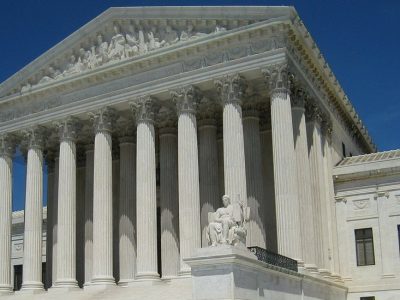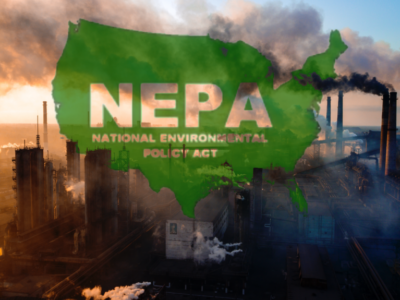Seven Counties Case
NEPA in the Supreme Court: The Seven Counties Oral Argument
Some arguments surfaced in the discussion that the Court would do well to ignore.
Several arguments popped up in the Supreme Court’s discussion of a major NEPA case that appealed to at least some of the Justices. We think that they would do well to rethink them. Each of the arguments distracts attention from what ought to be the key question: what impacts should the agency take into account in making its decision? We hope, when it comes time to draft opinions, the Justices will think through the arguments a little more fully and head in a different direction.
CONTINUE READINGNEPA in the Supreme Court — On the Eve of Oral Argument
Some thoughts about how the Court should define some limits on indirect effects.
Our paper on the proper scope of NEPA places heavy emphasis on foreseeability, but in an expanded version of the paper we consider some unusual situations where additional factors come into play. This additional analysis makes clear important limits on NEPA scope that we think address at least some of the concerns that have (appropriately) been raised about ever-expanding NEPA review and the risk that it will hamper efforts to develop needed infrastructure.
CONTINUE READINGNEPA in the Supreme Court (Part IV)
Understanding how causation applies for NEPA reviews.
This functional approach is consistent with Supreme Court precedent, based on the text and purposes of NEPA, and provides workable guidelines for agencies to determine what kinds of effects to examine when conducting environmental reviews. It is the approach the Court should follow when deciding Seven Counties, and when giving guidance to lower courts and agencies about how to apply NEPA.
CONTINUE READINGNEPA in the Supreme Court (Part III)
Our guide to understanding how causation applies for NEPA reviews.
Overall, the Supreme Court has articulated a functional approach that is based on the purposes of NEPA, based on the structure and text of the statute. Today’s post will lay the foundation by discussing NEPA’s purposes and how they differ from those of another area of law often used as an analogy, tort law
CONTINUE READINGNEPA in the Supreme Court (Part II)
Here’s why the Supreme Court should reject radical arguments for limiting environmental impact statements.
Our last post explained the background of the Seven Counties NEPA case, which is currently pending in the Supreme Court. Today, we discuss the radical arguments that have been made in the case and why they should be rejected. NEPA requires that agencies consider the environmental effects of their projects, but the petitioners raise hairsplitting arguments to exclude obvious effects due to technicalities. Pleas for revising the law should be made to Congress, not to the Supreme Court.
CONTINUE READINGNEPA in the Supreme Court (Part I)
A pending case could mean radical retrenchment of a foundational environmental law.
In what could turn out to be another loss for environmental protection in the Supreme Court, the Court is about to decide a major case about the scope of the National Environmental Policy Act of 1969 (NEPA). The case, Seven County Infrastructure Coalition v. Eagle County, has important implications for issues such as whether NEPA covers climate change impacts.
CONTINUE READING






